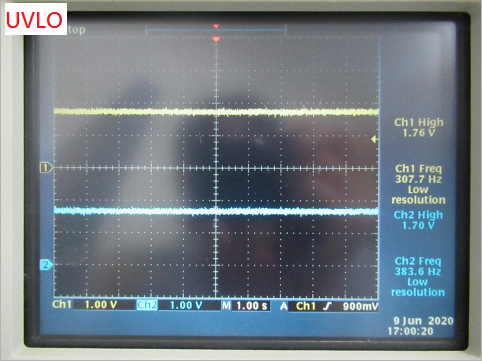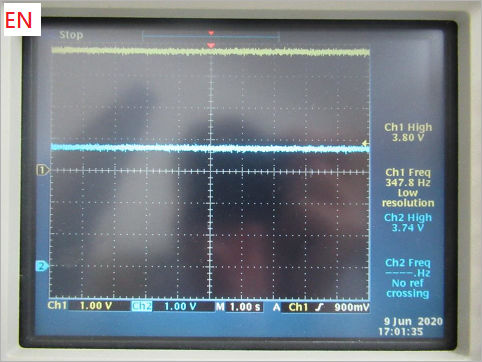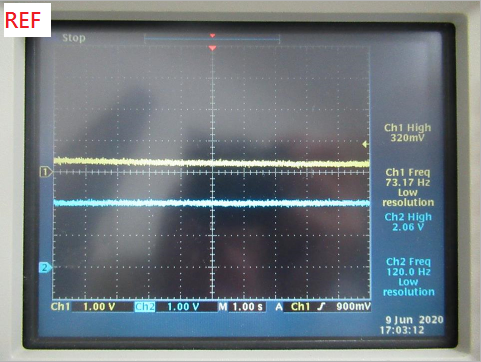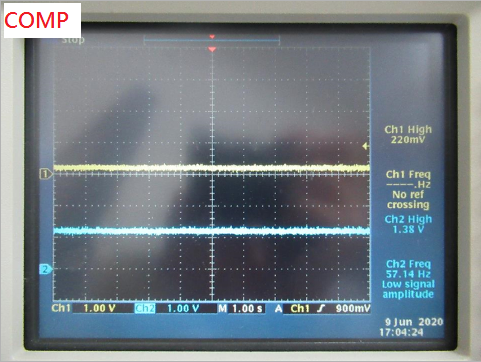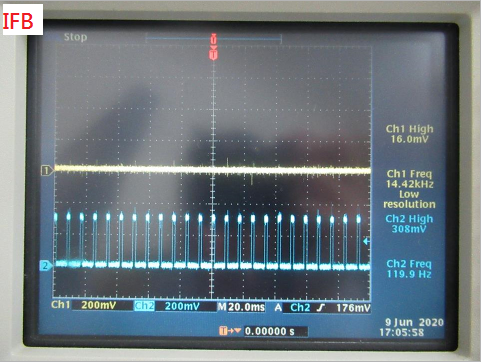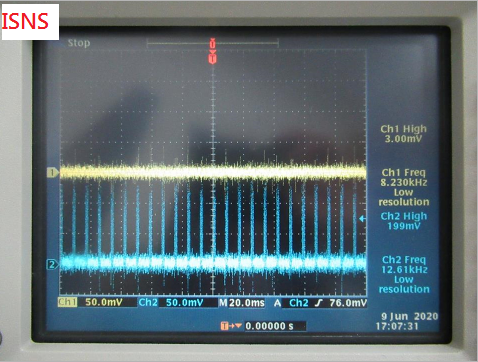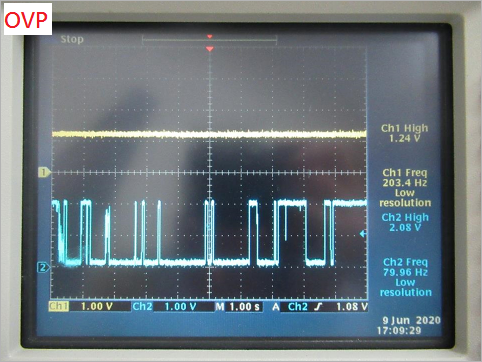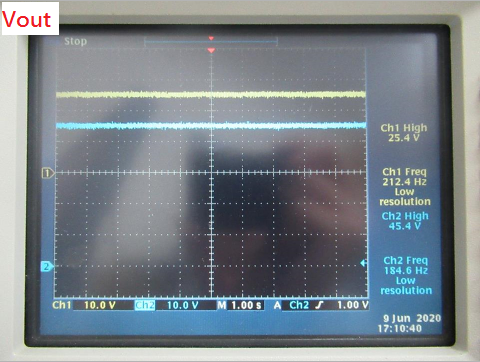Dear Sir/Ms.
The customer found that TI's TPS61197 adjusted PWM to reduce the output current value (about ≦140mA),
If the input power is cycled on and off multiple times, the IC will have a protection mechanism and no output.
At this time, if the input power is turned off and on again, it will resume normal output.
According to the same method mentioned above, it has been verified repeatedly for many times, and all have the chance to reproduce the same problem situation. According to the list of protection mechanism conditions mentioned in the TPS61197 specification, the relevant values measured by the instrument do not meet the established conditions.
Please also ask your company to help confirm the true cause of this problem with the original factory and the solution, thank you very much!
PWM Dimming Duty and Dimming frequency when there is a problem.
→ (1). Frequency 200Hz, Dimming Duty: 28.8% (High: 1.44ms, Low: 3.56ms), abnormality occurs at low probability.
→ (2). Frequency 120Hz, Dimming Duty: 21% (High: 1.76ms, Low: 6.6ms), high probability is abnormal.
The input voltage when there is a problem? What is the load at the time of measurement? System load? DC Loader? → The input voltage is 24V, and the load is LED Light-bar.
The abnormal condition is that the IC does not work and does not drive the LED light-bar to emit light, as described in the previous letter.
According to several protection mechanisms mentioned in the specification, the measured values did not meet the trigger conditions.
We can’t judge what the problem is, but the abnormal situation is very similar to the protection mechanism, and there is a chance to release the protection mechanism after restarting.
I wonder if there are other protection mechanisms not mentioned in the specification? Such as: PWM frequency or Duty's limitation... etc.
I have asked the customer for the schematic. They said that the circuit diagram is the same as the EVM. If they need to sign the NDA, our company signed the NDA with the customer, but the content is not convenient to put directly on the Internet. you.
Best Regards,
Kami Huang



